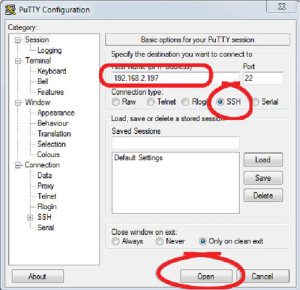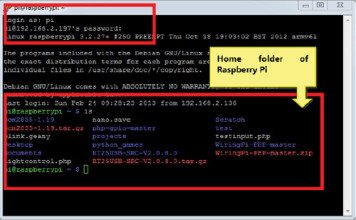Free Remote Access For Raspberry Pi: A Beginner's Guide
Introduction
Remote access to your Raspberry Pi opens up endless possibilities, whether you're a hobbyist tinkering with home automation or a professional managing IoT devices. In this comprehensive guide, we'll explore the best free methods to connect to your Raspberry Pi remotely, ensuring you have the flexibility and control you need. With tools like SSH, VNC, and the new Raspberry Pi Connect, remote access is not just a convenience—it's a gateway to transforming your projects into mobile experiences. Let's dive in!
Why Remote Access Matters
Remote access allows you to control your Raspberry Pi from anywhere, without needing to physically interact with the device. This is particularly useful for:
- Headless Setup: Operate your Raspberry Pi without a monitor, keyboard, or mouse.
- IoT Projects: Manage and monitor IoT devices remotely.
- Surveillance Systems: Access remote cameras and security systems.
By enabling remote access, you can perform tasks, troubleshoot issues, and manage your Raspberry Pi from the comfort of your home or office.
- Daisy Melanin Viral Video Original Youtube
- Adriana Lima Top Fell
- Aag Maal
- Viralkand Com
- Conchita Martinez Is She Married
Methods for Free Remote Access
1. SSH: Secure Shell for Command-Line Access
SSH (Secure Shell) is one of the most popular methods for remote access to Raspberry Pi. It allows you to control your device via the command line, which is perfect for scripting and automation tasks.
To set up SSH:
- Enable SSH on your Raspberry Pi by navigating to
Raspberry Pi Configuration>Interfaces>SSH. - Connect your Raspberry Pi to the same network as your computer.
- Use an SSH client (like PuTTY on Windows or the built-in terminal on macOS/Linux) to connect using the Raspberry Pi's IP address.
SSH is secure, lightweight, and free. It's ideal for those who prefer command-line interfaces.
2. VNC: Full Desktop Experience
If you prefer a graphical interface, VNC (Virtual Network Computing) is the easiest solution for remote access with the full desktop experience. It's included by default on Raspberry Pi OS, making it simple to set up.
To use VNC:
- Enable VNC in
Raspberry Pi Configuration>Interfaces. - Install a VNC client on your computer or mobile device.
- Connect to your Raspberry Pi using its IP address.
VNC works from any device, giving you a seamless desktop experience. However, it may require more bandwidth compared to SSH.
3. Raspberry Pi Connect: Native Remote Access
Announced by the Raspberry Pi Foundation, Raspberry Pi Connect is a native solution that provides secure, remote GUI access to your Raspberry Pi. It allows you to access your Raspberry Pi from anywhere using just a web browser, without the need for additional software.
Key features of Raspberry Pi Connect:
- Simple setup with minimal configuration.
- Secure connection using encryption.
- Access through any modern web browser.
Raspberry Pi Connect is perfect for beginners and professionals alike, offering a hassle-free way to manage your Raspberry Pi remotely.
4. Other Free Tools and Services
Beyond SSH, VNC, and Raspberry Pi Connect, there are several other free tools and services available for remote access:
- TeamViewer: A versatile tool that supports both command-line and graphical access.
- XRDP: Another option for remote desktop access, similar to VNC but with some additional features.
- Splashtop: Offers a free version for personal use, providing easy remote access and control.
These tools provide flexibility and can be tailored to suit your specific needs.
Setting Up Remote Access
Steps to Enable Remote Access
Regardless of the method you choose, setting up remote access involves a few common steps:
- Enable the Service: Ensure that SSH, VNC, or Raspberry Pi Connect is enabled on your Raspberry Pi.
- Find the IP Address: Determine the IP address of your Raspberry Pi to connect remotely.
- Install Client Software: Install the necessary client software on your computer or mobile device.
- Connect Securely: Use the appropriate credentials to establish a secure connection.
For advanced users, consider exposing SSH or VNC over the open internet or using a VPN for added security.
Best Practices for Secure Remote Access
While remote access is incredibly useful, it's important to prioritize security. Here are some best practices to follow:
- Use Strong Passwords: Avoid using default credentials and opt for strong, unique passwords.
- Enable Two-Factor Authentication (2FA): Add an extra layer of security to your remote connections.
- Regularly Update Software: Keep your Raspberry Pi OS and remote access tools up to date to protect against vulnerabilities.
- Limit Access: Restrict remote access to trusted devices and networks whenever possible.
Conclusion
Free remote access to your Raspberry Pi is not only possible but also essential for modern tech projects. Whether you choose SSH for command-line access, VNC for a full desktop experience, or the new Raspberry Pi Connect for browser-based control, there are plenty of options to suit your needs. By following the steps outlined in this guide, you can set up secure, reliable remote access to your Raspberry Pi without spending a penny.
In summary:
- SSH provides secure command-line access.
- VNC offers a full desktop experience.
- Raspberry Pi Connect is a native, browser-based solution.
- Other tools like TeamViewer and XRDP provide additional flexibility.
- Always prioritize security when setting up remote access.
With these methods at your disposal, you're ready to take your Raspberry Pi projects to the next level. Happy tinkering!
- Remoteiot Vpc Ssh Windows 10
- Mark Rutte Wife
- Xxl Xxl Xl Pro 2024 T%C3%A9l%C3%A9charger
- Conchita Martinez Wife
- Aditi Mistry

Remote Access To Raspberry Pi | Full DIY Project

Raspberry Pi remote access || Raspberry Pi VNC viewer setup || remotely

Remote Access To Raspberry Pi | Full DIY Project